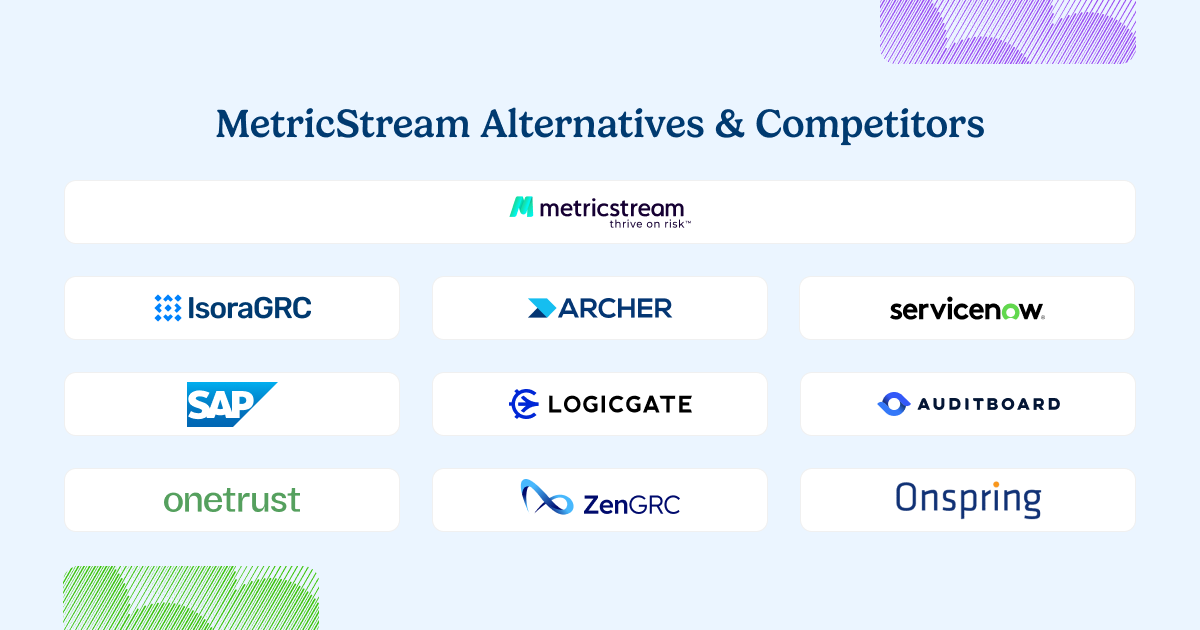
MetricStream is one of the oldest and most established names in the GRC market. It’s built for large enterprises managing complex governance, risk, and compliance programs across multiple departments and regulatory frameworks. But for security teams, that legacy often translates into overhead.
The platform is heavy, highly configurable, and slow to implement—making it difficult to support the fast, collaborative workflows required for modern IT and vendor risk management.
MetricStream falls into the category of all-in-one GRC platforms—designed to do everything, but often too bloated for teams focused on doing security work well.
Why Teams Look for MetricStream Alternatives
| Common Limitation | Why It’s a Problem | What to Look for Instead |
| Built for broad governance use cases | Security workflows are buried or require heavy customization | Purpose-built for IT and third-party risk management |
| Long, complex implementation cycles | Slows time to value and increases dependency on consultants | Fast, no-code setup with out-of-the-box structure |
| Steep learning curve | Low engagement from non-specialist users | Platform that’s easy for everyone—from analysts to execs |
| Fragmented user experience | Multiple modules, little cohesion | Unified experience that drives adoption and accountability |
What to Look for in a MetricStream Alternative
- Structured workflows for risk assessments, inventories, and exception management
- Rapid deployment without relying on consultants or admin specialists
- Cross-functional usability for better collaboration and adoption
- Designed specifically for security teams managing real-world risk
- A flexible platform that scales without becoming unmanageable
Top MetricStream Alternatives
1. Isora GRC
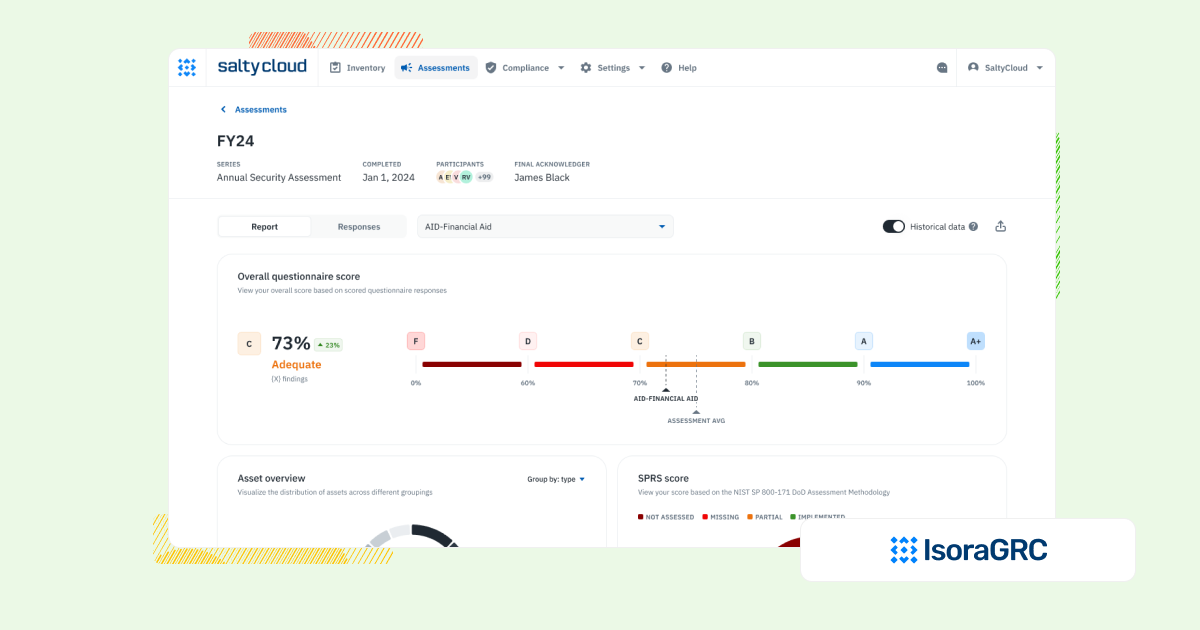
| Category | Details |
| Best For | Security teams that need to operationalize IT and third-party risk management across assets, third-party vendors, and business units. |
| Overview | Isora GRC is the GRC Assessment Platform™ built specifically for information security teams. It supports the full risk workflow, from assessments and questionnaires to risks, inventory, and reporting, without the complexity of legacy GRC tools or the limitations of audit-first platforms. |
| Strengths | Built for workflows, not checklists
✅ Supports assessments, inventory tracking, risk registers, and exceptions in a unified experience. Designed for org-wide adoption ✅ WCAG-compliant UX that requires no training and makes risk everyone’s job. Fast time-to-value ✅ Live in days or weeks, with no-code setup and minimal lift from IT. Flexible by default ✅ Customizable assessments, scalable categories, and framework mapping without heavy configuration. Scales across teams and vendors ✅ Works equally well for internal teams and third-party risk management programs. |
| Limitations | ⚠️ Not designed for legal, audit, or finance teams seeking one platform for enterprise-wide GRC
⚠️ May be too structured for teams looking to build one-off surveys or lightweight audits without repeatable workflows |
| When to Consider | If you need a modern risk platform built for continuous use, with workflows your security team will actually adopt, without the complexity and bloat of legacy enterprise GRC platforms. |
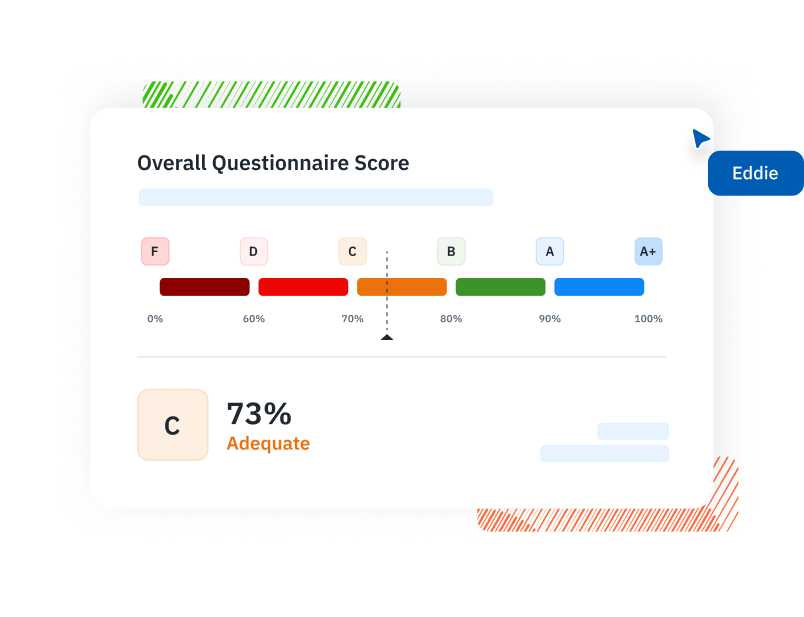
2. Archer IRM
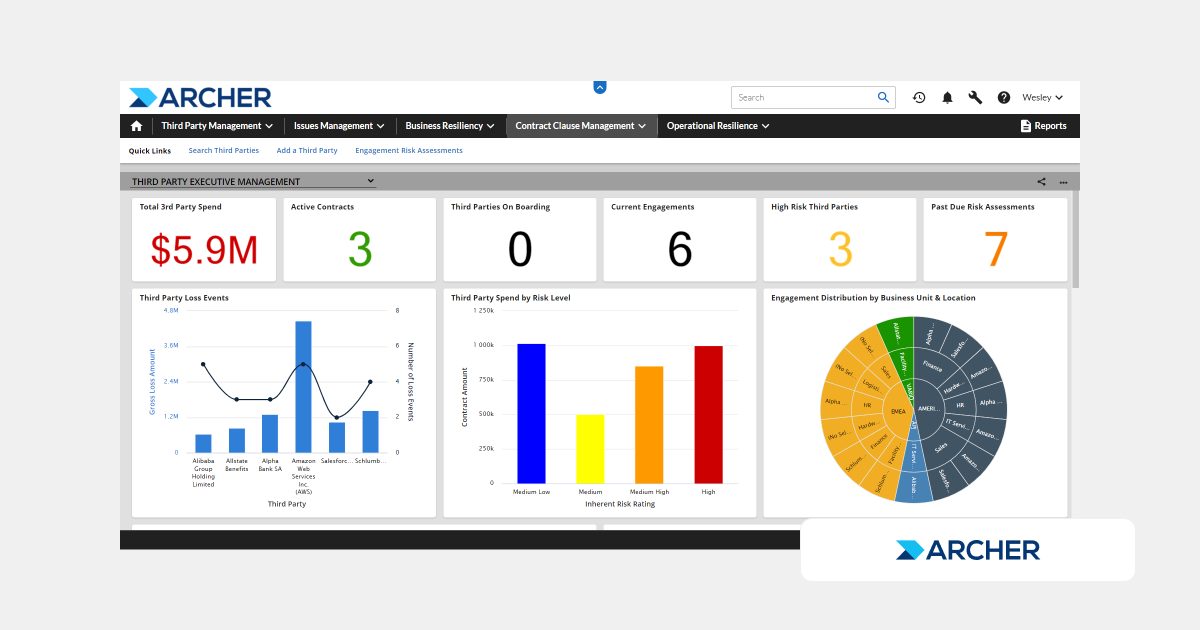
| Category | Details |
| Best For | Large enterprises managing complex governance programs with the resources to support long implementations and heavy configuration. |
| Overview | Archer IRM is a well-known legacy GRC platform with broad functionality across audit, compliance, and risk. Like MetricStream, it offers deep configurability but that comes at the cost of usability and speed for teams managing everyday security workflows. |
| Strengths | ✅ Highly configurable and used widely in regulated industries
✅ Supports broad governance and compliance requirements |
| Limitations | ⚠️ Long setup timelines and heavy reliance on technical resources
⚠️ Security and vendor risk workflows require extensive customization |
| When to Consider | If you’re managing a centralized, audit-heavy GRC program but can work around the slow deployment and lack of built-in structure for scalable security team workflows like risk assessments and vendor reviews. |
| Other Comparisons | Archer IRM vs ServiceNow GRC vs Isora GRC
LogicGate vs Archer IRM vs Isora GRC ZenGRC vs Archer IRM vs Isora GRC |
3. ServiceNow GRC
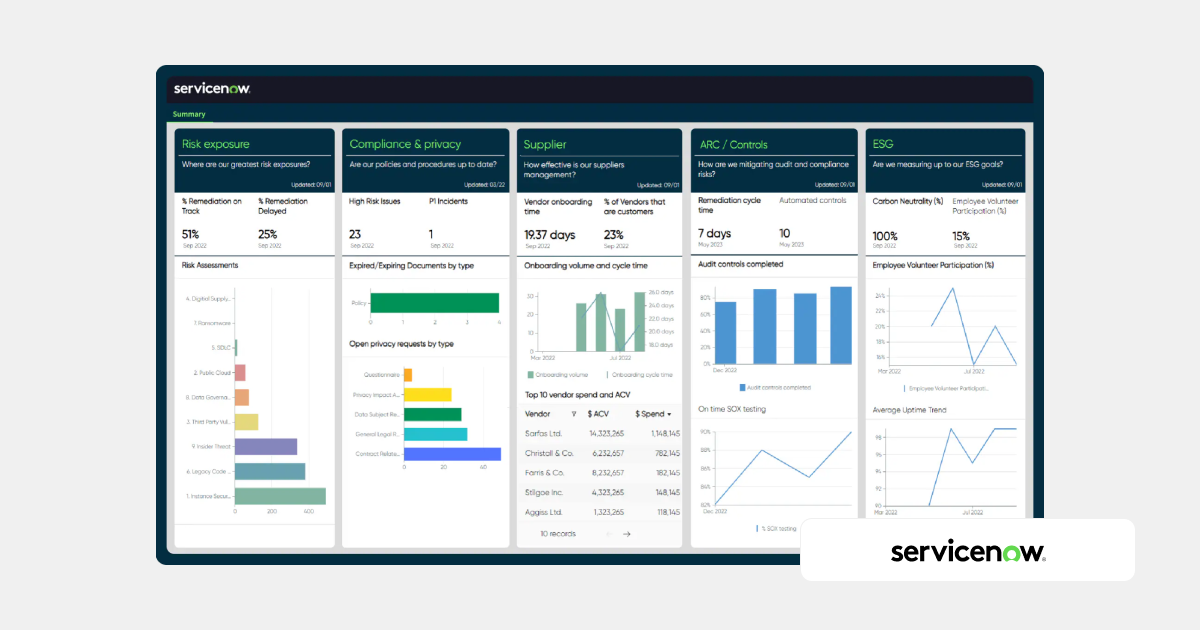
| Category | Details |
| Best For | Organizations already using ServiceNow for IT operations that want to layer in risk and compliance features. |
| Overview | ServiceNow GRC adds governance capabilities to the broader ServiceNow ITSM platform. While it offers strong process integration for IT teams, the platform’s GRC features often feel rigid and inaccessible for security teams managing dynamic, cross-functional risk programs. |
| Strengths | ✅ Strong integration with IT service management and incident tools
✅ Good for organizations already heavily embedded in the ServiceNow ecosystem |
| Limitations | ⚠️ Built around IT ops, not security-first workflows or assessments
⚠️ Requires significant configuration and technical support to launch |
| When to Consider | If you’re tied to the ServiceNow ecosystem but can work around the complexity and lack of intuitive workflows for IT risk assessments, exception tracking, and third-party reviews across departments. |
| Other Comparisons | Archer IRM vs ServiceNow GRC vs Isora GRC
OneTrust vs ServiceNow GRC vs Isora GRC |
4. SAP GRC
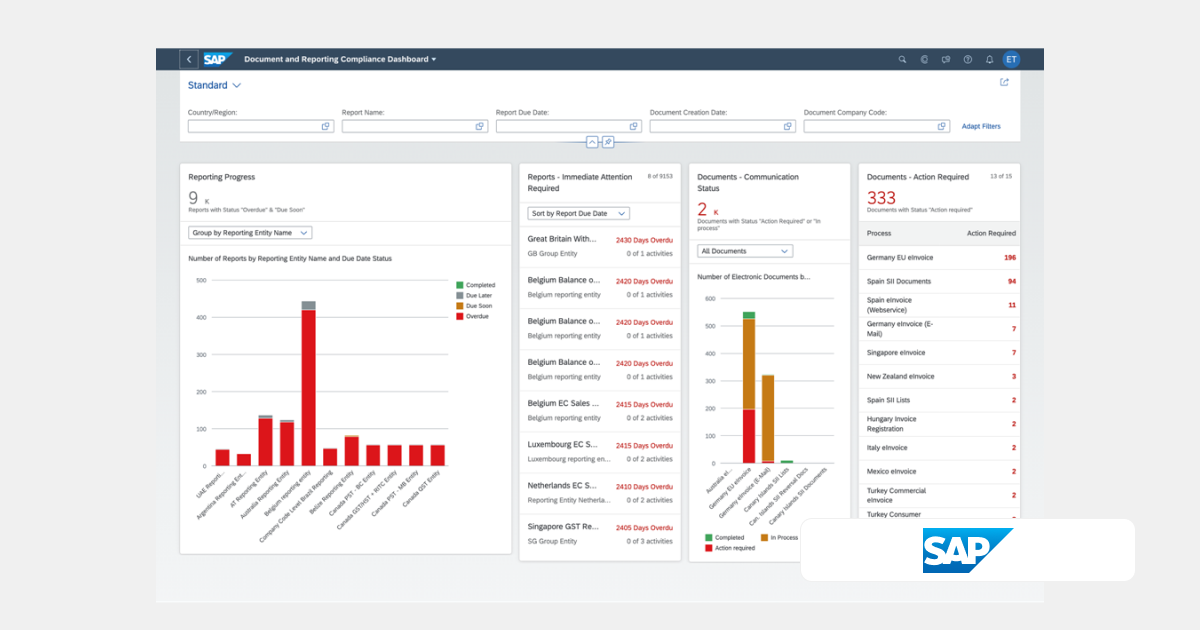
| Category | Details |
| Best For | Enterprises already operating in SAP environments that need embedded compliance and control management tools. |
| Overview | SAP GRC focuses on internal controls, audit trails, and compliance within SAP systems. Like MetricStream, it’s strong in governance but lacks the usability, flexibility, and speed required by security teams managing modern IT risk and vendor assessments. |
| Strengths | ✅ Tight integration with SAP’s financial and operational workflows
✅ Built-in tools for policy enforcement and regulatory controls |
| Limitations | ⚠️ Rigid and hard to adapt outside of SAP-specific environments
⚠️ Poor fit for collaborative risk workflows or scalable third-party risk programs |
| When to Consider | If you’re deeply embedded in SAP and need to manage financial controls but can work around the lack of support for agile IT risk management and broad organizational adoption outside of audit functions. |
| Other Comparisons | MetricStream vs SAP GRC vs Isora GRC |
5. LogicGate
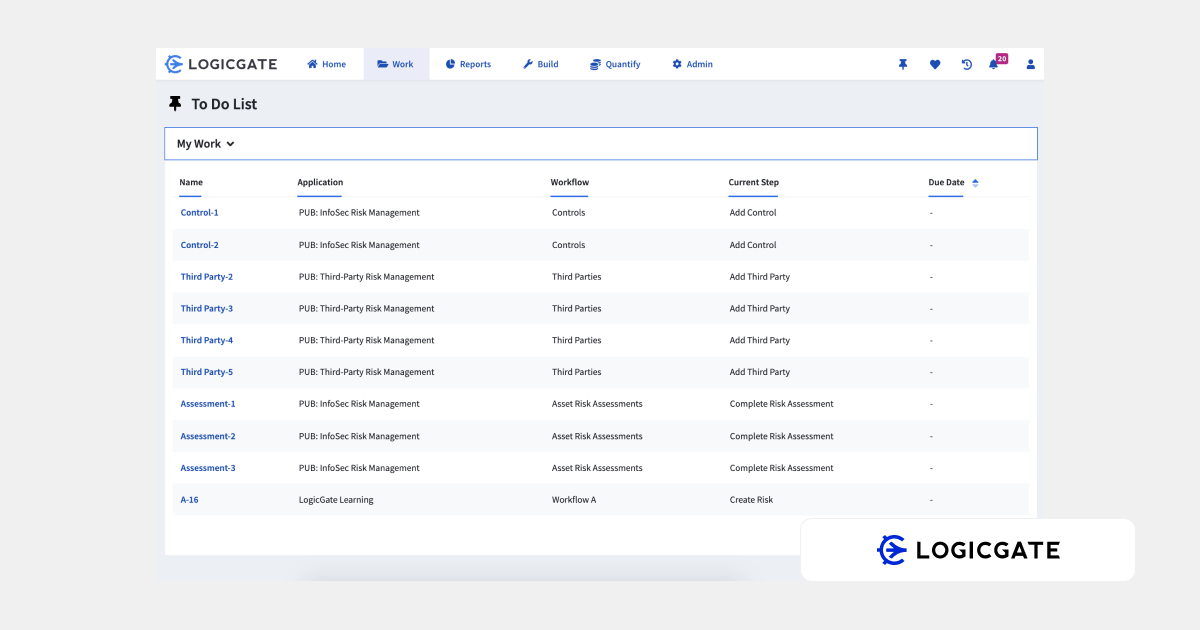
| Category | Details |
| Best For | Teams looking for a flexible, low-code platform to build and automate their own GRC workflows over time. |
| Overview | LogicGate offers a highly customizable environment for building GRC processes. It’s more agile than MetricStream, but still requires significant setup and design work, making it harder for teams that need structured workflows ready to go. |
| Strengths | ✅ No-code workflow builder tailored to diverse risk and compliance needs
✅ Can support frameworks like NIST, ISO, and SOC 2 |
| Limitations | ⚠️ Takes time to implement and requires internal process design expertise
⚠️ Less suited for teams that need pre-built workflows for rapid IT or vendor risk adoption |
| When to Consider | If you want to build your own custom risk program but can work around the slower ramp-up and lack of ready-to-use tools for asset assessments, exception tracking, and vendor risk reviews. |
| Other Comparisons | LogicGate vs Archer IRM vs Isora GRC |
6. AuditBoard
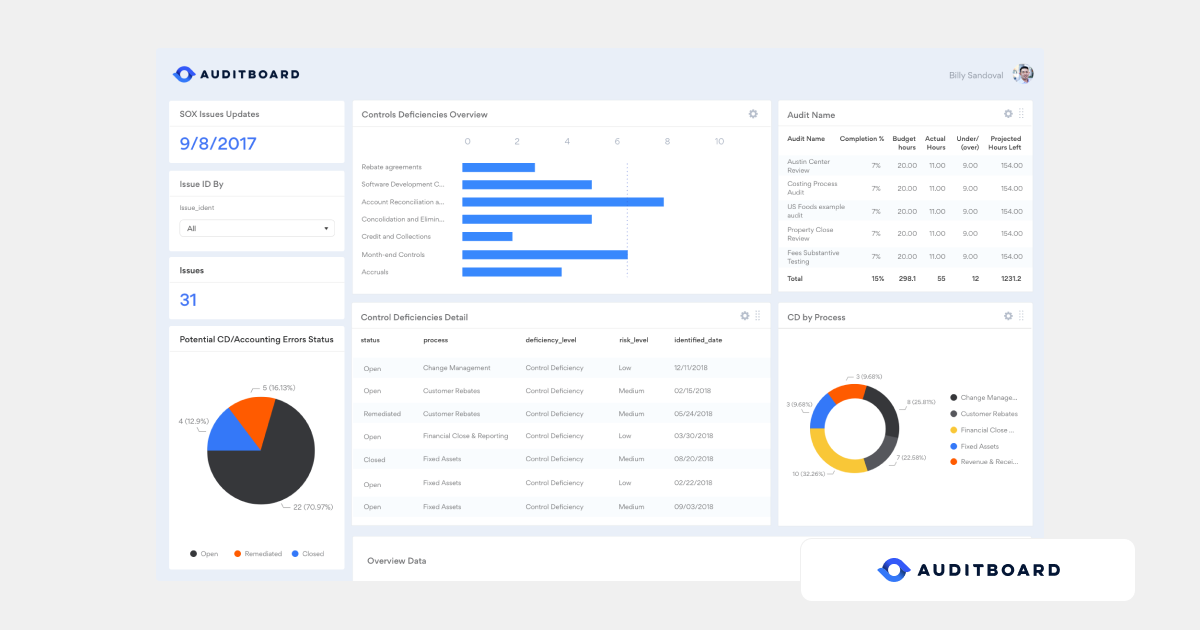
| Category | Details |
| Best For | Audit and compliance teams focused on controls, documentation, and streamlined internal audit processes. |
| Overview | AuditBoard is a solid platform for managing audit workflows and control documentation. However, it’s audit-first, not designed to support the flexible, cross-functional workflows required for hands-on IT risk or third-party security management. |
| Strengths | ✅ Strong for audit documentation, control testing, and SOX compliance
✅ Clean interface and easy onboarding for audit and compliance users |
| Limitations | ⚠️ Not designed for IT risk teams or cross-functional vendor risk management
⚠️ Lacks flexibility for tracking security exceptions or mapping assets to assessments |
| When to Consider | If your team is audit-led and focused on internal controls but can work around the lack of functionality for security assessments, asset tracking, and collaborative risk ownership across departments. |
| Other Comparisons | AuditBoard vs ServiceNow GRC vs Isora GRC |
7. OneTrust GRC
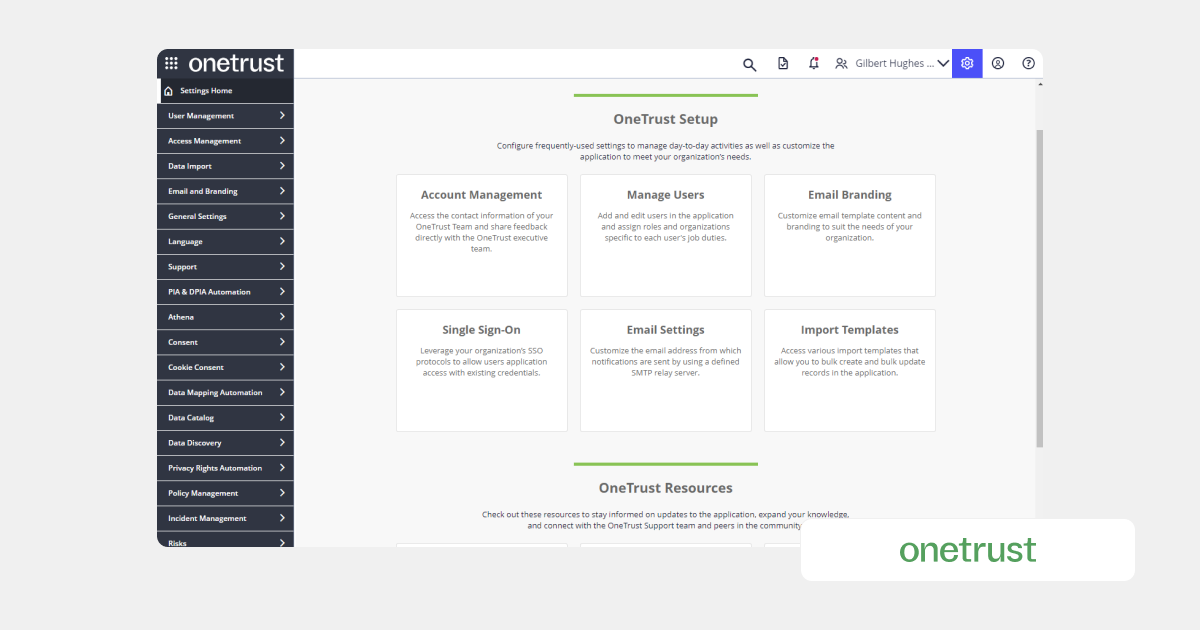
| Category | Details |
| Best For | Privacy, legal, and compliance teams focused on vendor reviews and regulatory documentation. |
| Overview | OneTrust GRC extends its privacy platform to include governance and vendor risk features. While strong in policy and compliance management, it’s less effective for security teams that need repeatable, scalable workflows for IT and vendor risk. |
| Strengths | ✅ Strong support for privacy regulations and vendor compliance documentation
✅ Includes pre-built templates like CAIQ, SIG, and HECVAT |
| Limitations | ⚠️ Lacks flexibility for internal risk assessments, asset management, and exception workflows
⚠️ Built more for legal and compliance than hands-on security teams |
| When to Consider | If your focus is on vendor documentation and privacy frameworks but can work around the platform’s limitations for structured, security-led risk and exception management workflows. |
| Other Comparisons | OneTrust vs ServiceNow GRC vs Isora GRC |
8. ZenGRC
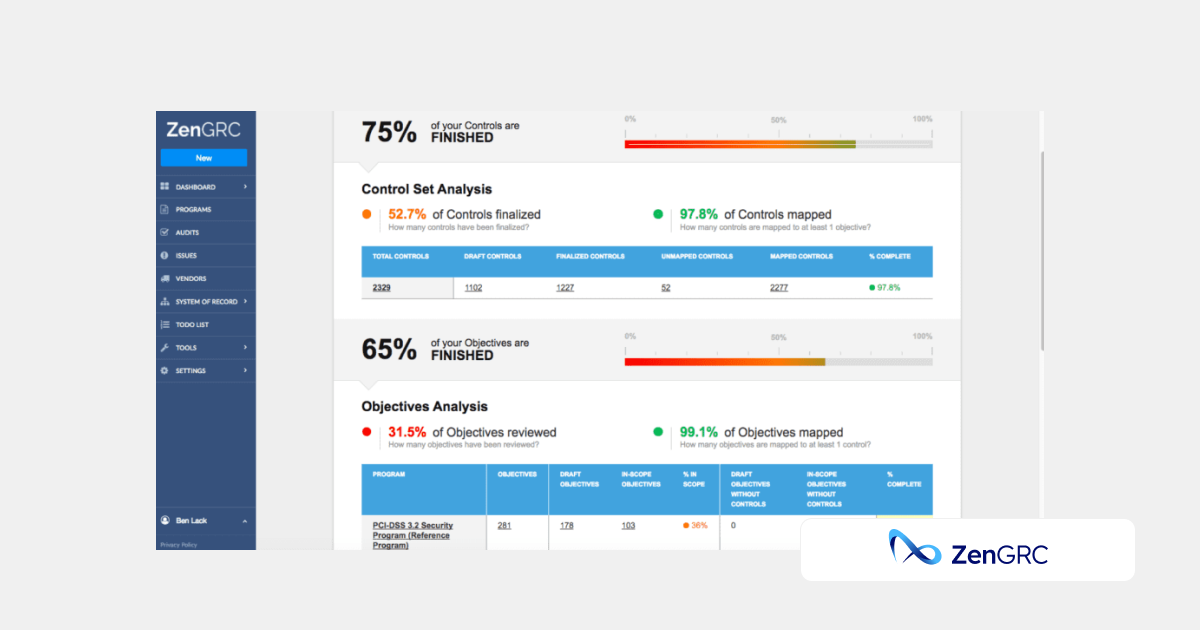
| Category | Details |
| Best For | Small teams or early-stage compliance programs looking for a lightweight way to organize frameworks and evidence. |
| Overview | ZenGRC is a simple platform for tracking compliance tasks and audit documentation. While easy to get started with, it lacks the depth and flexibility needed to support mature IT risk programs or manage vendor risk across business units. |
| Strengths | ✅ User-friendly interface with quick setup for audit and compliance
✅ Prebuilt templates for SOC 2, ISO 27001, and NIST frameworks |
| Limitations | ⚠️ Geared toward checklist-style audits, not structured security or vendor risk workflows
⚠️ Limited tools for scaling across teams or managing exceptions and asset-based risks |
| When to Consider | If you need a starter tool for compliance documentation, but can work around the lack of support for dynamic security team workflows or broader organizational risk tracking. |
| Other Comparisons | ZenGRC vs AuditBoard vs Isora GRC |
9. Onspring
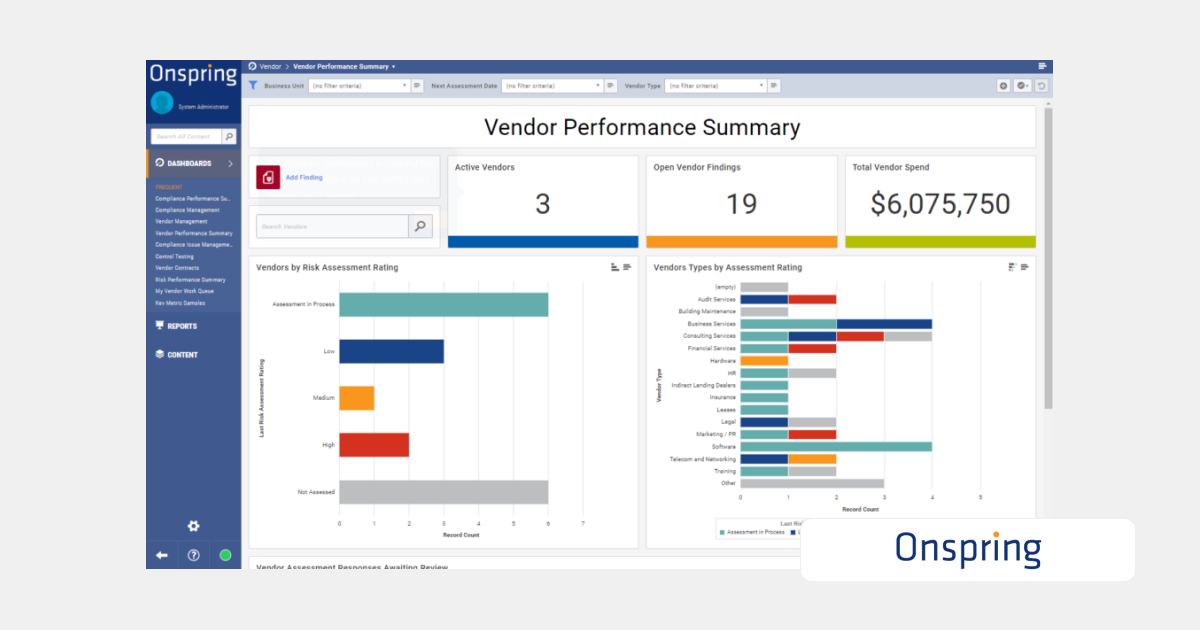
| Category | Details |
| Best For | Teams that want to create custom GRC workflows across departments using a no-code platform. |
| Overview | Onspring is a flexible, no-code solution for building GRC processes. It’s good for legal or audit teams managing complex approvals, but like MetricStream, it requires time and planning to configure, making it a challenge for security teams that need faster deployment. |
| Strengths | ✅ Customizable workflows for governance, audit, and compliance processes
✅ No-code environment suitable for non-technical teams |
| Limitations | ⚠️ Slower time-to-value for IT and security teams needing structured assessments now
⚠️ Doesn’t come pre-configured for security assessments, exception workflows, or vendor risk programs |
| When to Consider | If you want to build your own GRC framework from scratch, but can work around the platform’s lack of built-in support for fast, scalable security operations and third-party risk management tools. |
| Other Comparisons | Onspring vs AuditBoard vs Isora GRC |
What Our Customers Say About Isora GRC
Security teams at top institutions are using Isora GRC to replace legacy tools and manual processes with intuitive workflows and actionable insight.
“Moving from manual processes to using Isora was a breath of fresh air. What used to take months is now automated, reliable, and defensible. Isora saves us significant time while delivering accurate insights that improve decision-making.”
Jessica Sandy, IT GRC Manager, The University of Chicago
“Isora has been essential in helping us meet our University of California cybersecurity requirements across a decentralized campus. Automating assessment data collection and reporting has given us clear visibility into unit-level risks, enabling us to prioritize resources effectively and address gaps with confidence.”
Allison Henry, CISO, The University of California, Berkeley
FAQs
What are some alternatives to MetricStream?
MetricStream is part of the all-in-one GRC platform category—built for enterprise-scale governance, risk, and compliance programs. Alternatives like Isora GRC provide more focused workflows for security teams who need to manage IT risk, vendor assessments, and exceptions without the overhead of large-scale configuration.
Why do teams switch from MetricStream to platforms like Isora GRC?
Teams often switch from MetricStream after struggling with long implementations, low user adoption, and complex setup. Security teams in particular find it difficult to manage fast-moving risk workflows in such a heavy platform. Isora GRC offers a lighter, purpose-built solution that’s easier to adopt and scale.
Does Isora GRC replace tools like MetricStream or complement them?
Isora GRC typically replaces MetricStream for teams focused on IT and vendor risk. While MetricStream supports broad GRC needs, Isora offers structured, repeatable workflows for risk assessments, exception tracking, and inventory management—without the steep learning curve.
Which platform is better for managing risk across internal teams and vendors?
MetricStream can support multi-team governance, but its complexity often limits real collaboration. Isora GRC is designed to involve stakeholders across the organization with intuitive workflows and fast onboarding—making it a better fit for teams that need to drive adoption.
What should I look for in a MetricStream alternative?
Look for a platform that balances structure with simplicity—offering workflows for assessments, exceptions, inventories, and reporting without requiring months of configuration. Isora GRC is built to meet those needs while scaling with your risk program over time.
This content is for informational purposes only and does not constitute legal or compliance advice. See our full disclaimer.


















